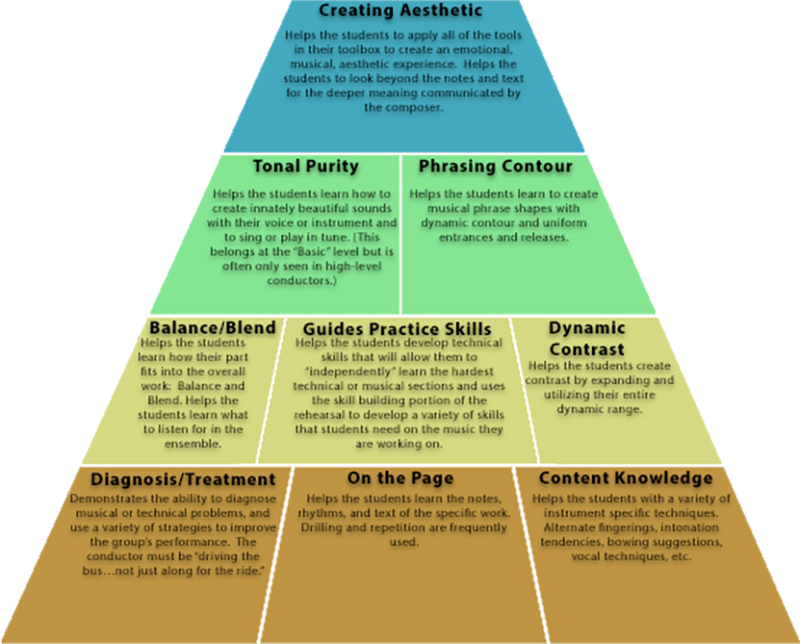Guest Article: A Rehearsal Taxonomy for Observing Ensemble Conductors
Do you have an increasing number of observations in your classrooms by administrators and non-music colleagues? If so, you have likely found that these professionals, though trained educators, are not quite sure what to look for in a music educator’s rehearsal technique. The observation and assessment tools they use are often ill-suited to determine the quality of teaching in your rehearsal. Therefore, our department created a written taxonomy to assist in evaluating music educators. This can be of tremendous benefit to your administrators who are observing your classroom teaching. Even more crucially, it is an excellent tool for non-musicians tasked with evaluating and eventually hiring new music educators at a given school.
The idea of this musical Rehearsal Taxonomy was based on Bloom’s Taxonomy. Bloom’s Taxonomy is an effective way to prioritize the kind of learning experiences students are having in the classroom. Our department developed a similar instrument to help observers in our classrooms evaluate the level of musicianship that is being taught. Student learning experiences are arranged from basic skill “rote” teaching to high-level activities that lead students to have emotional, musical, and aesthetic experiences.
Granted, not every rehearsal can be taught the same way, and most rehearsals will typically have activities that function at several levels of the taxonomy. There are days in which we just need to chase notes and rhythms. But even then, we should encourage as much of an aesthetic approach to musicianship as possible.
Rehearsal Taxonomy for Ensemble ConductorsAll of these rehearsal activities are critical to the ensemble experience. But, high-level conductors invest much more effort at the top of the chart than basic-level conductors. |
Separate from the Taxonomy, but Vital to Being an Outstanding Conductor
A high level conductor must demonstrate that they believe the group can be wonderful, a belief that the kids can be musical and in tune. Leaders get what they tolerate or accept. If the group is already wonderful, do they have a vision of a performance level that is even higher?
In addition, feeling “tone” or “atmosphere” in the room is truly important. There are a lot of different ways to say, “You didn’t do that right. Let’s try it again this way.” Some of them build up the group. Some of them tear the group down. A performing ensemble must be a happy community! Otherwise, who would choose to participate?
I hope this observation guideline, or some modification of it, can be a useful tool for you, your colleagues, and your administrators. Not only can you help your observations from non-music-educator administrators and peers be more fair and useful, but you can also assist your school and district making better hiring decisions. Finally, self-examination of your rehearsal methods, viewed through the lens of these guidelines, may assist you as you grow and develop as an educator and conductor.


